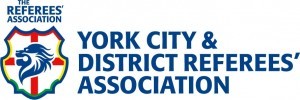IFAB has announced the changes that come into effect from 1 June 2018
Outline of the main changes /clarifications
Modifications
• There is no limit on the number of substitutes that can be used in youth football
• Permission is needed from The IFAB for any modifications not already permitted
• Temporary dismissals – System B: a player who receives two temporary dismissals and a non-temporary dismissal caution (YC) may not be substituted/replaced
Law 1
• Clarification of measurements on the field of play
• Reference to substituted players being permitted to be in the technical area
• Commercial advertising is not permitted on the ground in the referee review area (RRA)
• Reference to the video operation room (VOR) and referee review area (RRA)
Law 3
• Competition rules may permit the use of an additional substitute in extra time (even if not all permitted substitutes have been used)
• A maximum of 12 substitutes can be named for international ‘A’ friendly matches
Law 4
• Small, hand-held electronic or communication devices are permitted in the technical area if used for coaching/ tactics or player welfare
• Introduction of a FIFA quality mark for EPTS and data from EPTS may be received in the technical area during the match
• Detailed guidelines for what can and cannot appear on players’ equipment
• Player who has left the field because of an equipment issue and returns without permission and interferes is penalised with a direct free kick (or penalty kick)
Law 5
• Reference to video assistant referees (VARs) and assistant VARs (AVARs) and the ability of a referee to use video replays for decision-making as part of VAR system
• Some sending-off offences can be reviewed even if play has restarted• Match officials are not permitted to wear cameras
• Inclusion of the referee ‘check’ and ‘review’ signals used in the VAR process
Law 6
• Distinction between ‘on-field’ match officials and ‘video’ match officials
• Duties of the video assistant referee (VAR) and assistant VAR (AVAR)
Law 7
• Drinks breaks should not exceed one minute
• Allowance must be made for time ‘lost’ for drinks breaks and VAR ‘checks’/ ‘reviews’
Law 10
• Kicks from the penalty mark – a replacement for a goalkeeper cannot take a kick in that ‘round’ if the goalkeeper has already taken a kick
Law 11
• The first point of contact when the ball is played/touched is the moment when offside position is judged
Law 12
• Biting is included as a direct free kick and sending-off offence
• Throwing an object at the ball or hitting the ball with a held object are separate direct free kick offences (not a form of handball)
• If the ball rebounds from the goalkeeper this does not prevent the goalkeeper handling the ball a second time even if the first attempt to catch/hold the ball was deliberate
• If the referee plays advantage for a DOGSO the offender is cautioned (YC) whether or not a goal is scored
• Entering the RRA or excessively showing the TV signal are cautions (YCs)
• Where 2 separate cautionable (YC) offences are committed in close proximity, both cautions (YCs) must be issued; same principle if one is a sending-off offence
• Entering the VOR is a sending-off (RC) offence
• If a player commits an offence outside the field of play (ball in play) against someone from their own team (including a team official) it is an indirect free kick on the boundary line
Law 13
• Clarification that free kicks can also be awarded for offences by a substitute, substituted or sent off player, or team official
Law 15
• A player must stand to take a throw-in (kneeling, sitting etc. not permitted)
In addition, the following wording was deleted as it is no longer relevant:
Law 2
• Reference to previous ball quality marks: Balls carrying previous quality marks such as “FIFA Approved”, “FIFA Inspected” or “International Matchball Standard” may be used in aforementioned competitions until 31 July 2017.
For the full version of the new Laws see IFAB site

